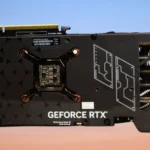Elon Musk’s neurotechnology venture, Neuralink, achieved a significant milestone by implanting its brain device in a human patient for the first time. Musk announced the successful procedure on X (formerly Twitter), noting that the patient is “recovering well.”
The groundbreaking device, Telepathy, is part of Neuralink’s mission to develop brain implants that enable individuals with severe paralysis to control external technologies using neural signals. This development allows patients with conditions like ALS to communicate and access digital platforms using their thoughts.
Neuralink initiated its first-in-human clinical trial after receiving approval from the U.S. Food and Drug Administration (FDA) earlier in the year. The brain device trial aims to assess the safety and efficacy of the brain implant technology. If successful, Neuralink’s Telepathy could revolutionize communication for individuals with degenerative diseases, allowing them to communicate at speeds surpassing conventional methods.
While the specifics of the trial, including the number of participants, remain undisclosed, Neuralink’s progress underscores the growing interest in brain-computer interface (BCI) technology. BCIs and similar devices developed by Neuralink and other companies, such as Synchron, Precision Neuroscience, Paradromics, and Blackrock Neurotech, decode brain signals to control external devices.
Neuralink’s endeavor, propelled by Musk’s high-profile involvement, has garnered significant attention within the BCI industry. However, it faces competition from other players advancing similar technologies.
Companies like Paradromics and Precision Neuroscience have made strides in their respective clinical trials, with Paradromics aiming for human trials in the first half of the year and Precision Neuroscience already conducting initial studies.
While the race to commercialize BCI technology intensifies, it remains uncertain which company will be the first to market. However, Neuralink’s successful implantation marks a significant step forward in unlocking the potential of brain-machine interfaces for medical and technological applications.












